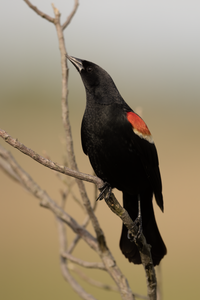
Photo from wikipedia
In Michigan, corn (Zea mays) is grown on 2.35 million acres with an annual production valued at $1.36 billion dollars (USDA-NASS). Southern rust is caused by the obligate biotrophic fungus… Click to show full abstract
In Michigan, corn (Zea mays) is grown on 2.35 million acres with an annual production valued at $1.36 billion dollars (USDA-NASS). Southern rust is caused by the obligate biotrophic fungus Puccinia polysora Underw. and is often ranked in the top five most destructive corn diseases in the southern U.S. (Mueller et al. 2020). Yield losses due to southern rust in the northern U.S. have been considerable and estimated to be 231 million bushels from 2016 to 2019. In 2020 and 2021, corn leaf samples exhibiting signs typical of infection by P. polysora were collected from commercial production fields across Michigan. In 2020, samples were collected from two counties, Branch and Hillsdale. In 2021, samples were collected from 10 additional counties, Allegan, Barry, Calhoun, Eaton, Ingham, Kent, Montcalm, Shiawassee, Tuscola, and Van Buren. Uredinia of P. polysora were observed aggregated primarily on the upper leaf surface, light cinnamon brown to bright orange, ovular, and surrounded by yellow halos. Urediniospores were yellow to gold in the center, hyaline along the outer membrane, ellipsoid to obovoid, with short echinulations on the surface when viewed at 40x magnification under a light microscope. Urediniospores (n=180) measured 17 to 28 x 26 to 38 µm. No telia were observed. To confirm identification, the large subunit (28S) rDNA was amplified and sequenced with rust specific primers as described in Aime (2006) and Aime et al. (2018) on a sample collected from Shiawassee County in 2021. The resulting DNA sequence (GenBank Accession No. OL468037) shared 99.79% identity (932/934 bp) with P. polysora voucher BPI 863756 (GenBank Accession No. GU058024; Dixon et al. 2010). This report serves as the first documentation of southern rust in Michigan and an initial survey of its distribution throughout the state. Because of the ability of P. polysora spores to travel long distances via wind (Cammack 1959), it is likely that disease was present but not detected in additional counties not included in this report. Although widespread yield losses due to southern rust have not been documented in Michigan, there have been anecdotal reports of 30 bushels per acre losses in grain corn and 30% loss of tonnage from silage fields. Understanding the distribution of southern rust can help inform future disease management and corn breeding research. Furthermore, the distribution of southern rust is projected to move poleward by 15° by 2100 due to increasing global temperatures (Ramirez-Cabral et al. 2017), and the movement of southern rust into northern corn growing regions should be documented. Additional Michigan counties with confirmations of southern rust will continue to be reported via the corn IPMpipe https://corn.ipmpipe.org/.
Journal Title: Plant disease
Year Published: 2022
Link to full text (if available)
Share on Social Media: Sign Up to like & get
recommendations!